Related Research Articles
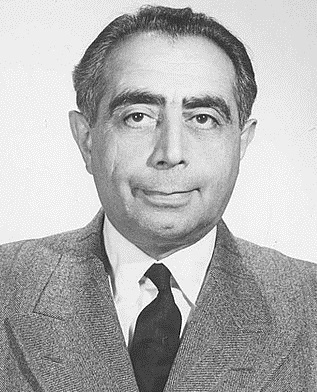
Ali Amini was an Iranian politician who was the Prime Minister of Iran from 1961 to 1962. He held several cabinet portfolios during the 1950s, and served as a member of parliament between 1947 and 1949.

Asadollah Alam was an Iranian politician who was prime minister during the Shah's regime from 1962 to 1964. He was also minister of Royal Court, president of Pahlavi University and governor of Sistan and Baluchestan Province.

Hasan Ali Mansur was an Iranian politician who served as Prime Minister from 1964 to 1965. He served during the White Revolution of the Shah Mohammad Reza Pahlavi and was assassinated by a member of the Fada'iyan-e Islam.
Gholam Hossein Jahanshahi was the second son of Mohammad Shafi Jahanshahi, the former head of the supreme court of Iran.
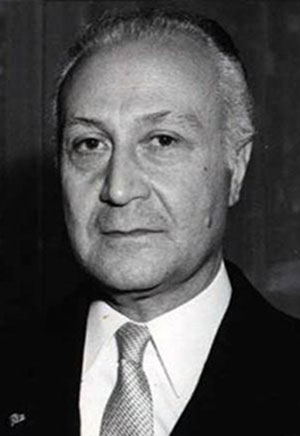
Abbas Ali Khalatbari, also known as Abbas Ali Khal'atbari, was an Iranian diplomat, who served as the minister of foreign affairs from 1971 to 1978. He was among the significant diplomats who shaped the foreign relations of Iran during the reign of Mohammad Reza Pahlavi. He is one of the Shah era politicians who were executed following the Iranian Revolution.
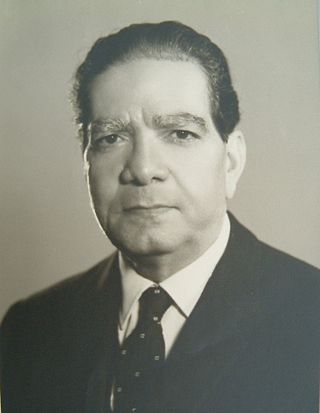
Abbas Aram (1906–1985) was an Iranian diplomat and served as foreign minister for two terms between 1959 and 1960 and between 1962 and 1966. In addition, he was the ambassador of Iran to various countries, including Iraq, the United Kingdom and China.

Mehrdad Pahlbod, born as Ezatollah Minbashian, was an Iranian politician who served as the first culture minister of Iran from 1964 until 1978.
Iranian Land Reform was a major land reform in Iran and one of the main concerns of the White Revolution of 1963. It was a significant part of the reform program of Shah Mohammad Reza Pahlavi and occurred when the existing feudal system was abolished and the arable land redistributed from large landowners to smaller agricultural workers.
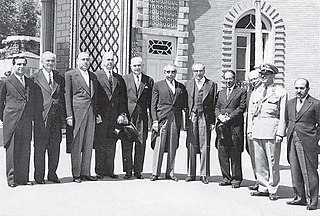
Ali Amini was appointed to rule by decree as the Prime Minister of Iran on 5 May 1961, succeeding Jafar Sharif-Emami. His cabinet was approved on 9 May 1961.
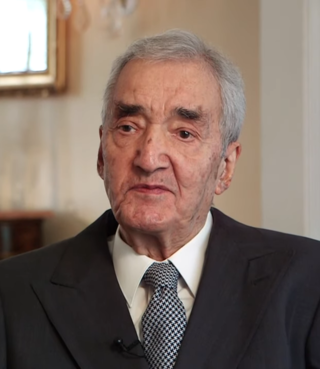
Alinaghi Alikhani was an Iranian economist who held government posts in the 1960s and was the first minister of economy of Iran. He also served as the chancellor of Tehran University.

Mohammad Ali Varasteh (1896–1989) was an Iranian statesman who held several cabinet posts in the 1950s and also, served as the governor of Isfahan Province. He was the head of the regency council which was formed soon after the Shah Mohammad Reza Pahlavi left Iran in January 1979.

Abdollah Hedayat (1899–1968) was an army officer who served as the chief of general staff at the Imperial Iran Army.

Sadegh Amirazizi (1905–1992) was an Imperial Iranian Army general and a politician who served as the minister of interior three times during the reign of Shah Mohammad Reza Pahlavi. Following the 1979 revolution he left Iran and settled in Paris, France. He died there in 1992 and buried in Behest e Zahra Cemetery in Iran.
Jahangir Tafazzoli (1914–1990) was an Iranian journalist and government official during the Pahlavi period. He held various official posts and established a newspaper entitled Iran-e Ma. He committed suicide on 20 December 1990.

The second government formed by Prime Minister Asadollah Alam was inaugurated on 19 February 1963. It replaced the first government of Alam which ended on 18 February when he submitted his resignation to the Shah Mohammad Reza Pahlavi. The cabinet lasted for nearly thirteen months until 8 March 1964 when Asadollah Alam resigned from the office. It was succeeded by the cabinet of Hassan Ali Mansur.
Ataollah Khosravani was an Iranian politician. He served as the secretary-general of Iran Novin Party and held several cabinet posts in the 1960s.

The cabinet led by Haj Ali Razmara was formed on 26 June 1950 and succeeded the cabinet led by Ali Mansur who was in office between April and June 1950. Razmara was a lieutenant general at the imperial army and was serving as the chief of the general staff when he was appointed by the Shah Mohammad Reza Pahlavi as the prime minister. It was the 33rd and first military cabinet in Iran since 1924. Behrooz Moazami also argues that it was one of the cabinets which did not follow the political agenda of the Shah in addition to the cabinets of Mohammad Mosaddegh and those of Ahmad Qavam in the Pahlavi rule. The Razmara cabinet ended on 11 March 1951 three days after the assassination of the prime minister.
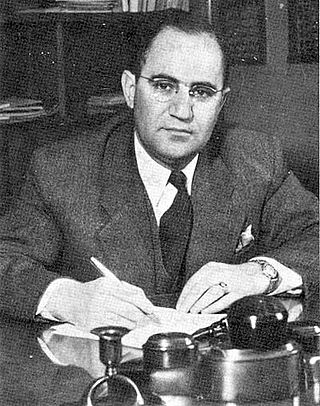
Jahanshah Saleh (1905–1995) was an Iranian physician and politician. He served as health minister and education minister in the 1950s and 1960s. He was the obstetrician of Queen Farah Diba, spouse of Shah Mohammad Reza Pahlavi.
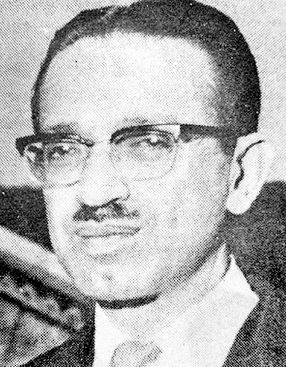
Safi Asfia was an Iranian mining engineer, technocrat and politician who held several cabinet posts during the reign of Shah Mohammad Reza Pahlavi. He was arrested in 1979 when an Islamic revolution took place in Iran and was imprisoned for five years. Following his release Asfia did not leave Iran and was involved in computer programming.

The government formed by Prime Minister Asadollah Alam was inaugurated on 21 July 1962. It succeeded the Government of Ali Amini when Amini resigned from office on 18 July 1962.
References
- ↑ Vali Nasr (February 2000). "Politics within the Late-Pahlavi State: The Ministry of Economy and Industrial Policy, 1963–69". International Journal of Middle East Studies. 32 (1): 99. JSTOR 259537.
- ↑ Gholam Reza Afkhami (2009). The Life and Times of the Shah. Berkeley, CA: University of California Press. p. 318. ISBN 978-0-520-94216-5.
- ↑ "با استعفای دولت ؛ کابینه جدید امروز به شاه معرفی شد" (in Persian). Institute for Iranian Contemporary Historical Studies. Retrieved 3 September 2021.
- ↑ Michael J. Willcocks (2015). Agent or Client: Who Instigated the White Revolution of the Shah and the People in Iran, 1963 (PhD thesis). University of Manchester. p. 68.
- 1 2 "Chronology December 16, 1961 – March 15, 1962". Middle East Journal. 16 (2): 192. Spring 1962. JSTOR 4323471.
- ↑ "Chronology June 16, 1962-September 15, 1962". The Middle East Journal . 16 (4): 486. Autumn 1962. JSTOR 4323525.
- ↑ "Chronology September 16, 1962 – March 15, 1963". Middle East Journal. 17 (1–2): 113. Winter–Spring 1963. JSTOR 4323557.